
Feel free to add tags, names, dates or anything you are looking for


Among numerous archaeological discoveries made in Georgia over recent years, the Grakliani Hill find has attracted special attention.
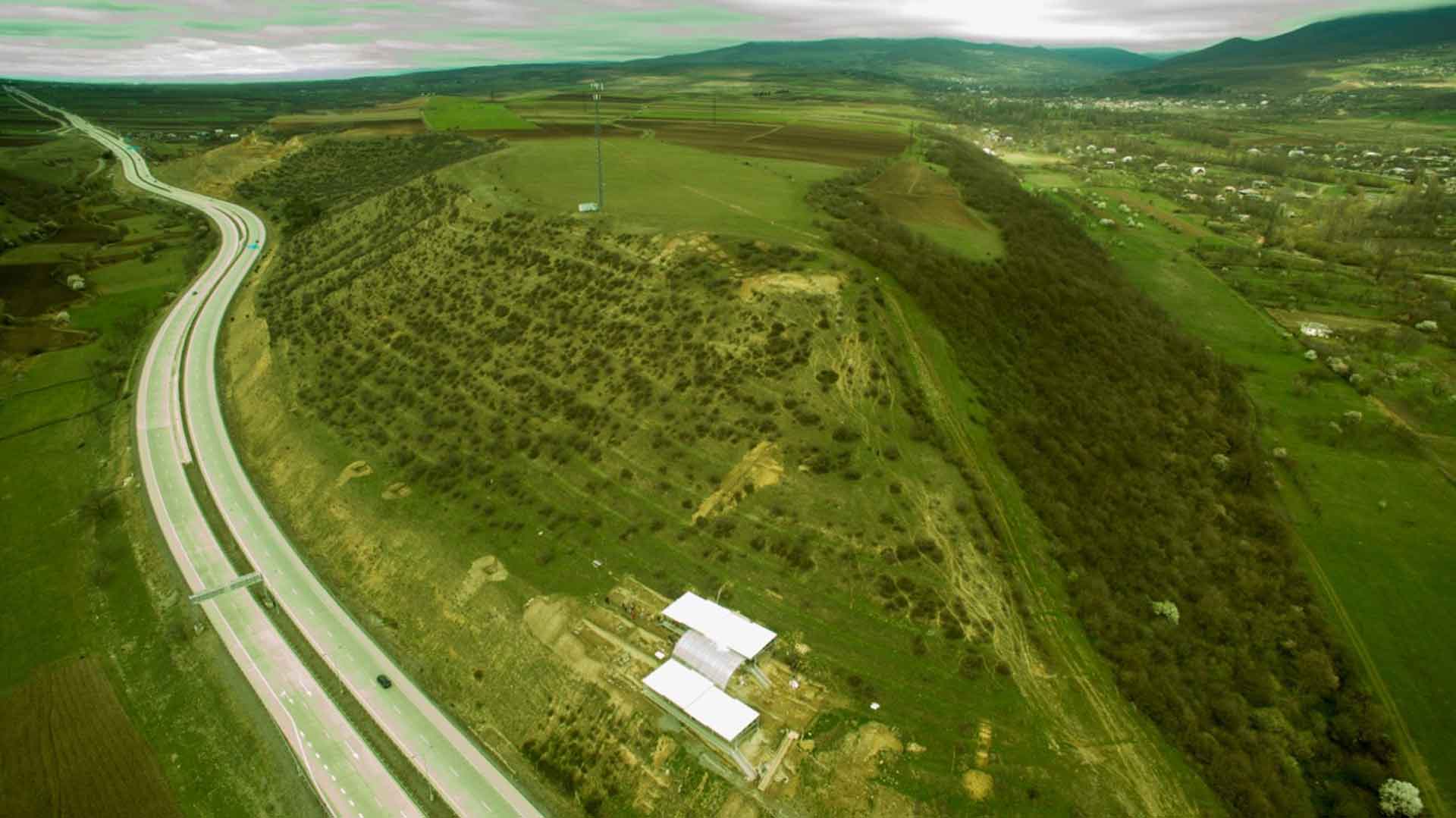
Grakliani Hill, view from drone
Although it has only been 12 years since archaeologists appeared here, 11 different periods of human activity have already been established, beginning from the Old Stone Age (about 1,500,000 - 1,800,000 years ago) up to the fourth century AD. Within this very extensive timeframe, two periods draw particular attention: the V-IV centuries BC and the X century BC.
Grakliani hill is close to Tbilisi - to the west, the main highway of Georgia and Transcaucasia at exactly 57 km, crosses the second terrace of the hill.
Two types of archaeological remains have been identified on Grakliani Hill: a necropolis (360 tombs have already been excavated) and a settlement where houses, chapels, pantries, workshops, culverts and other structures have been identified.
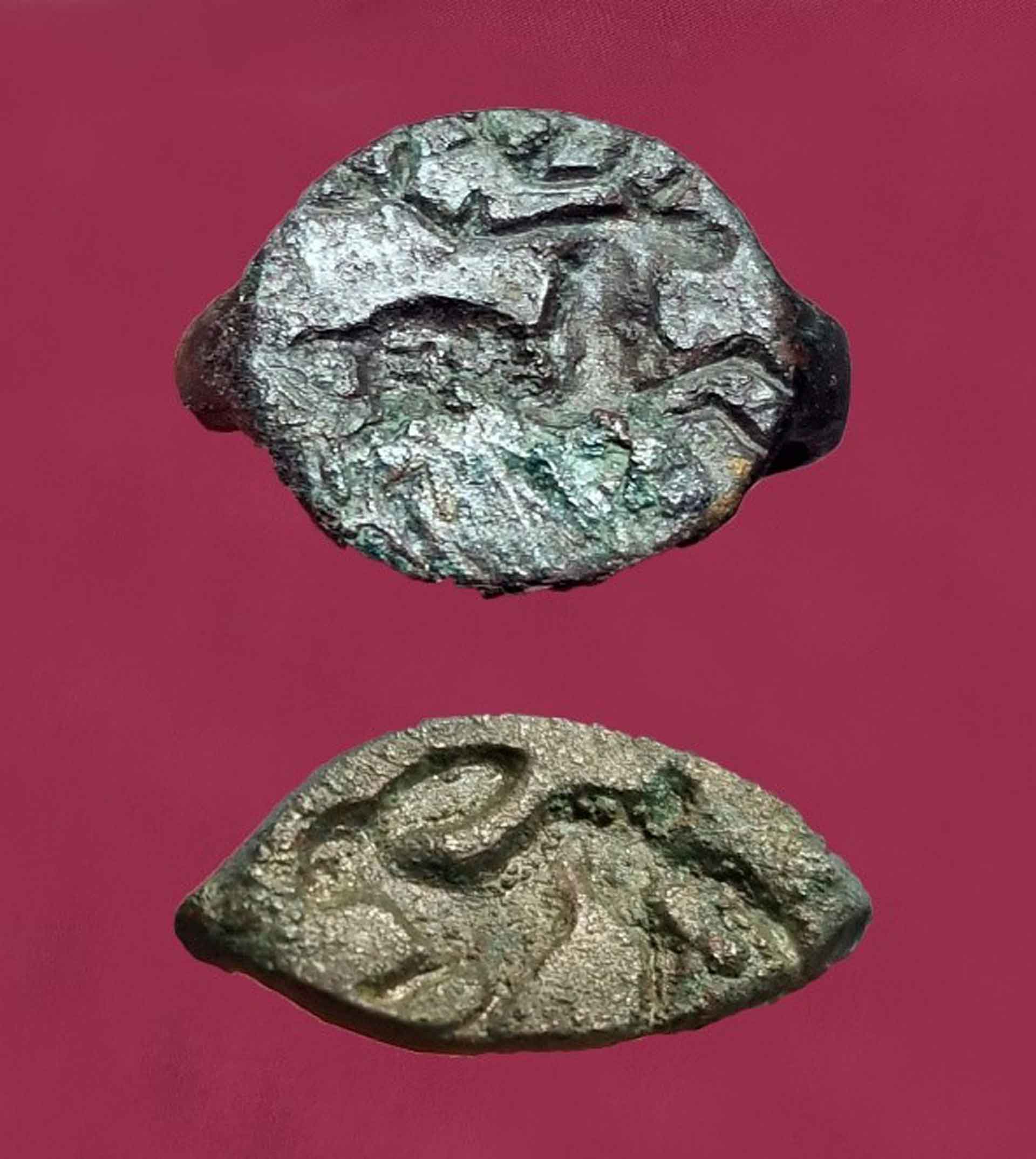
Rings with deer and rabbit images
Before discussing the above special cases, I would like to mention that a tomb dating back to the IV century BC has just been discovered, where along with the man's belongings (a silver plate on his forehead, a silver spoon, silver bracelets, gold pendants, and a clay jug), his own horse was also buried.

Tomb with a horse burial - BC IV century

Silver and gold inventory from a horse burial ground

A silver belt from a horse burial ground
The results of the excavations on Grakliani Hill first attracted attention when architectural remains from the V-IV centuries BC appeared. The fact is that prior to this discovery, in eastern Georgia (which the ancient Greeks and Romans called the Iberia of the Caucasus), no buildings dating from this period had been traced, and as such this part of history had been shrouded in oblivion.
For the first time the very research of Grakliani Hill buildings from the V-IV centuries revealed that the economy and culture of Iberia were flourishing during this period, and this was concurrent with the rule of Achaemenid Iran. In addition to the territory of Iran, the Achaemenid empire also included the Caucasus (apart from Kolkhis!), Anatolia, Asia Minor, the Levant Corridor, Egypt, and even part of Greece. A result of this relationship is the proliferation of Zoroastrian shrines on Grakliani Hill.
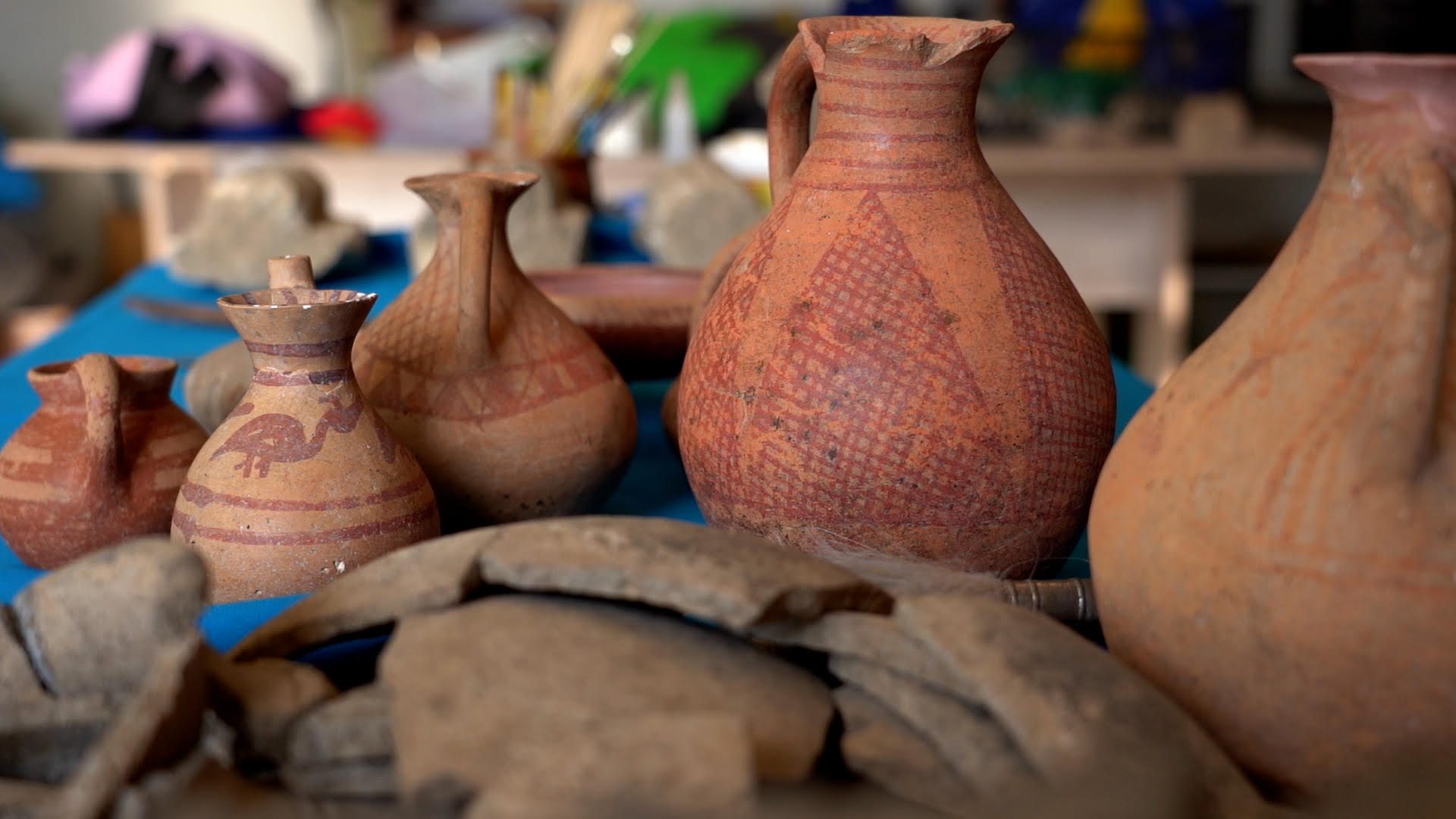
Clay jug covered with drawings BC 4, century

Red painted bowl, BC 5th century
Nevertheless, the local traditions were also preserved, which is especially well-evidenced in the form of ritual furnaces. The use of such ovens began here as early as 3,200 years ago, and they were not only used for baking and heating bread, but also, on rare occasions, for melting metal.
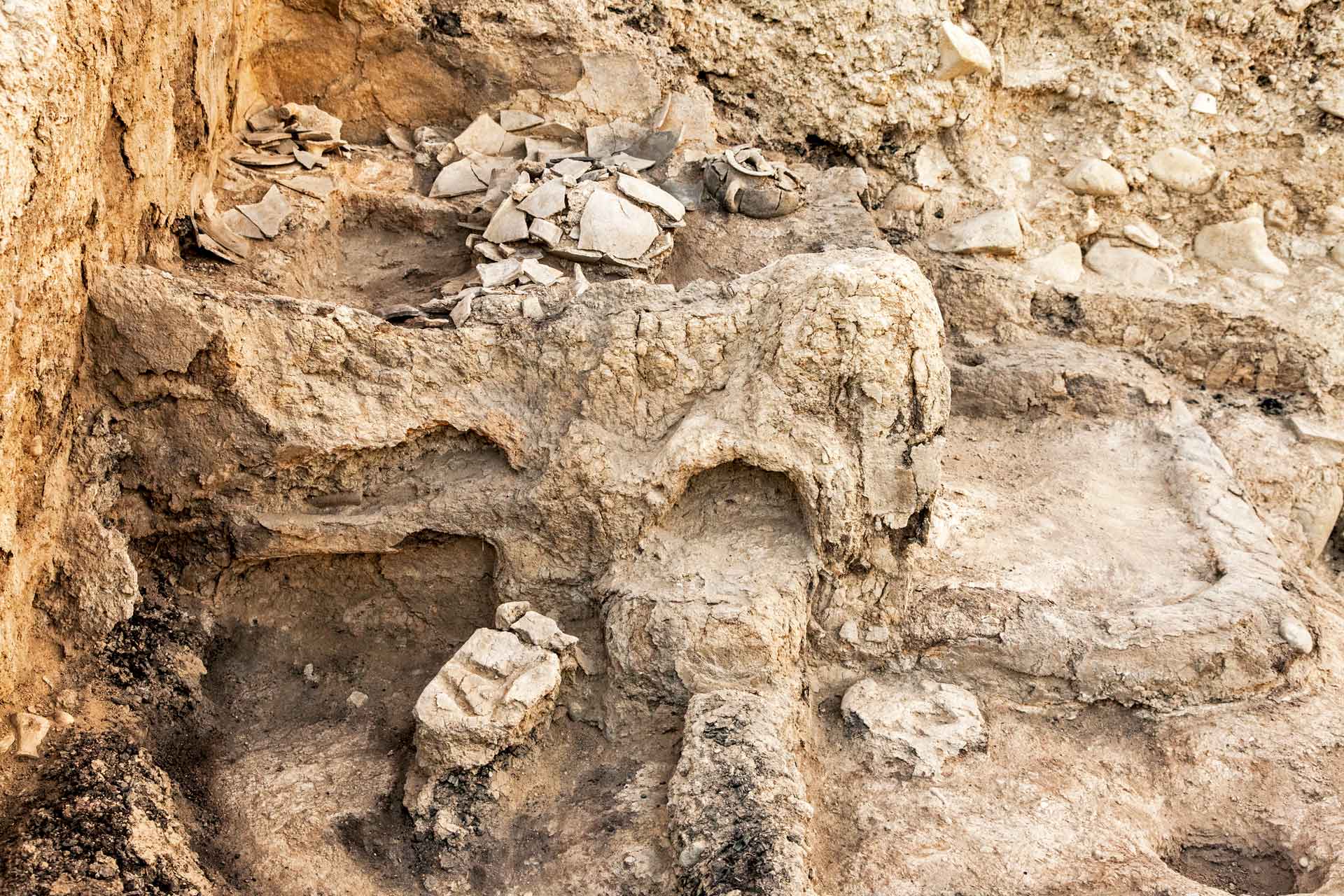
Ritual furnace - BC V-IV centuries
The tradition of baking bread is confirmed not only by the fact that ovens were found in all storehouses, but also by the discovery of dozens of hand grain mills. The wheat was ground by women, and it would have taken between 7 and 10 hours to obtain one kilogram of flour. It is noteworthy that this community had an extensive trade and cultural network, as evidenced in the tomb of a wealthy 25-year-old woman, which contained an oriental-made glass accessory – a kohl-tube. It was filled with a 2,500-year-old black powder designed for darkening the eyelids.
Grakliani Hill sparked particularly great international interest for the second time with the discovery of a unique inscription, which was preserved on the third terrace. A strange construction turned up on the floor of a small chapel. It was a clay altar, that had formerly been erected on a clay pedestal. The remains of many vessels were found in front of and around the altar, all of them full of millet. After removing them, a completely unexpected event occurred - an inscription became visible on the pedestal, which is the oldest script in Georgia and throughout the Caucasus!
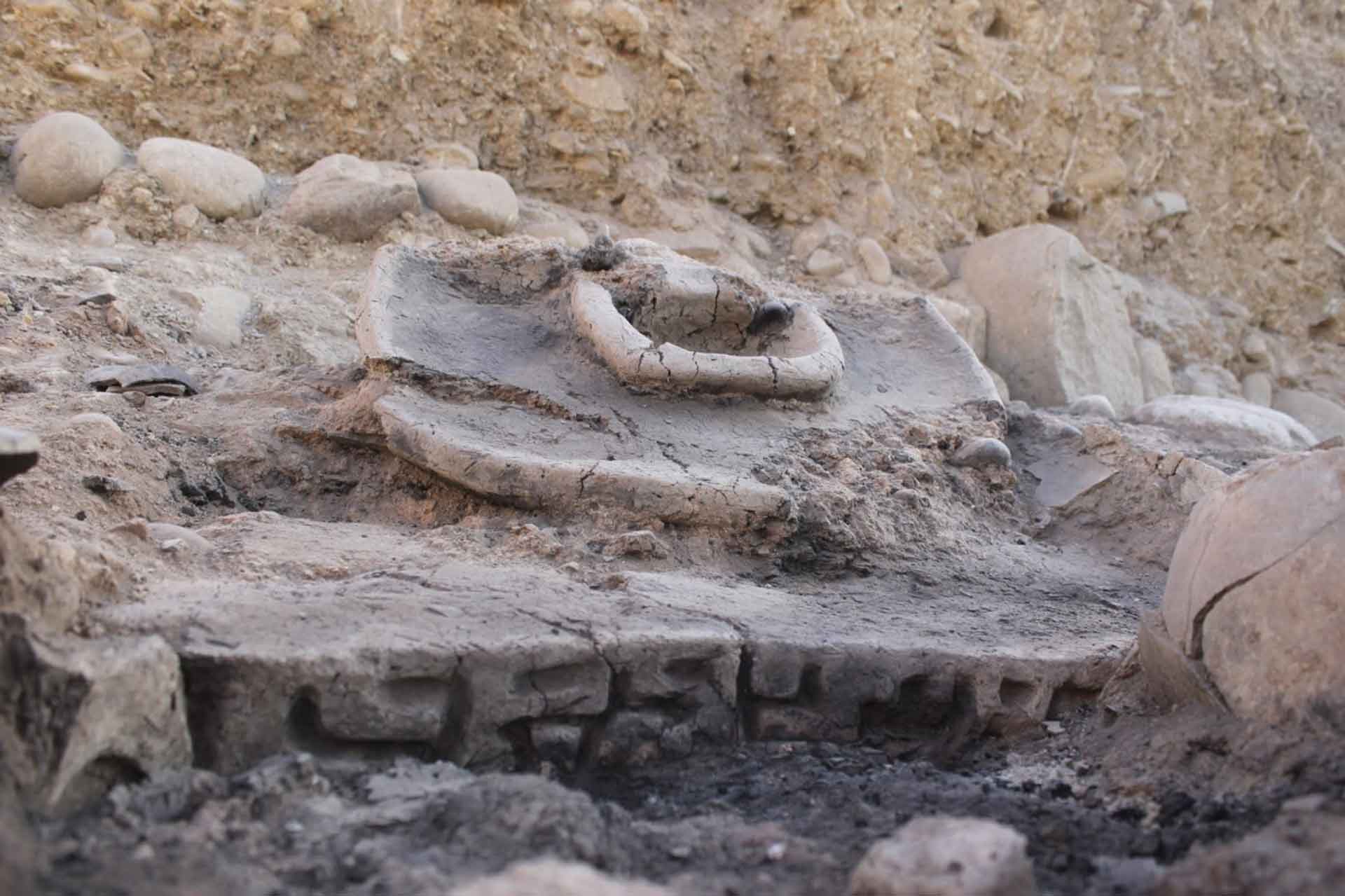
Inscription excavation process
The carbonized remnants were sent to the Miami Beta Laboratory, and allowed us to set an exact date – the X century BC. The same date was confirmed by laboratories at the University of Groningen and in Zurich. The very fact that the inscription is carved on the pedestal indicates that this alphabet was used by local people living in Grakliani. At that time, written script was the highest stage of intellectual development of any society! To the east of the inscription inside the chapel, a clay information-stela once stood, which was decorated with the sculptural image of a ram.

Stela, BC 10, century
Located to the west of the inscription, a strange, two-cornered idol of a goddess stood on a ritual stove. The fact that the inscription (which graphically resembles Aramaic script) is carved on the chapel and on the pedestal of the altar, means that it had a religious, cult purpose, and also that it was an appeal, a request to a deity; while the fact that the inscribed altar was surrounded with pots filled with millet tells us that the ancient Grakliani people prayed to the goddess for abundance, wealth and fertility. The significance of this inscription extends beyond Georgia and the Caucasus: before its discovery, the VIII century Bukan Aramaic inscription (on the east coast of Urmia Lake, Iran) was considered to be the most distant and archaic example of an inscription showing alphabetic origins.

Chapel with inscription BC X century
The Grakliani inscription dates from two centuries earlier and is located 1,000 km north of Bukan. This is the very secret of Grakliani: how did such an intellectual innovation happen to take place in Caucasian Iberia? What historical processes preceded this event? How did this actually come about?
To provide a more complete picture, I would like to add that another discovery indicates such a high level of intellectual development: these being weights that are equal to 363 grams, which show that 3,000 years ago the ancient Grakliani people had their own unit of weight, and that may have been created on the basis of Mesopotamian hybrid glass. This relationship is also logical, since prints made 6,000 years ago in Uruk, one of the oldest urban centres in the world, were also found at Grakliani.